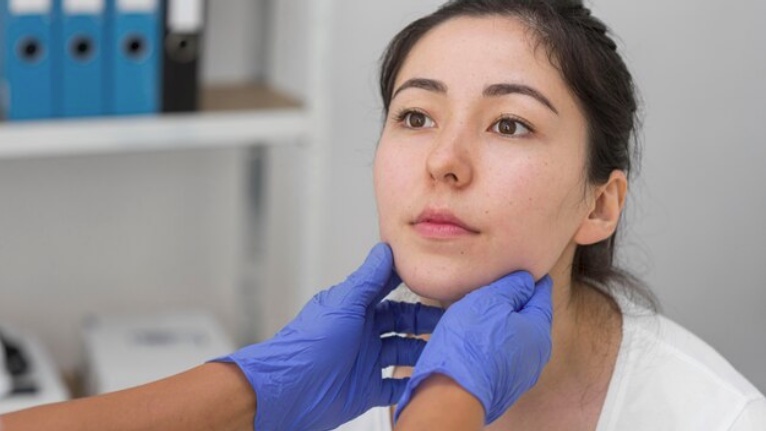Introduction
Hyperhidrosis, a medical condition characterized by excessive sweating beyond what is necessary for thermoregulation, can significantly impact an individual's quality of life. Everyday activities become challenging, and social interactions may be marred by self-consciousness. In recent years, Botox has emerged as a groundbreaking treatment for hyperhidrosis, offering a solution that goes beyond traditional antiperspirants. This comprehensive guide delves into the power of Botox for hyperhidrosis, exploring how this minimally invasive procedure provides sweat-free confidence to those dealing with the challenges of excessive sweating.
Understanding Hyperhidrosis
Hyperhidrosis is a condition marked by uncontrollable, often unpredictable, and excessive sweating. It can affect various parts of the body, including the palms, soles of the feet, underarms, and face. While sweating is a natural bodily function, individuals with hyperhidrosis experience it at a level that goes beyond what is considered normal.
Two main types of hyperhidrosis exist:
-
Primary Focal Hyperhidrosis: This form of hyperhidrosis is localized to specific body parts and is not caused by an underlying medical condition. It often begins in childhood or adolescence and can significantly impact daily activities.
-
Secondary Generalized Hyperhidrosis: This type is characterized by excessive sweating throughout the body and is usually a result of an underlying medical condition, such as diabetes, menopause, or thyroid issues.
Impact of Hyperhidrosis on Daily Life
Living with hyperhidrosis can be challenging and may have a profound impact on various aspects of daily life:
-
Social and Professional Interactions: Excessive sweating can lead to self-consciousness and affect social and professional interactions. Individuals may avoid handshakes, feel uncomfortable in social settings, or experience embarrassment due to visible sweat stains.
-
Clothing Choices: Those with hyperhidrosis may need to choose clothing carefully to conceal sweat stains, limiting their wardrobe choices and affecting their personal style.
-
Emotional Well-being: The psychological impact of hyperhidrosis can contribute to anxiety, depression, and a decreased overall sense of well-being. Constant worry about sweating can be mentally exhausting.
Botox for Hyperhidrosis – How It Works
Botox, or botulinum toxin, is commonly known for its cosmetic use in reducing wrinkles and fine lines. However, its application in treating hyperhidrosis has gained recognition as an effective and minimally invasive solution. Here's how Botox works to alleviate excessive sweating:
-
Blocking Nerve Signals: Botox works by temporarily blocking the nerve signals that stimulate sweat glands. When injected into specific areas affected by hyperhidrosis, Botox inhibits the release of acetylcholine, a neurotransmitter that triggers sweat production.
-
Localized Treatment: Botox injections for hyperhidrosis are localized to the targeted area, ensuring that only the sweat glands in that region are affected. This precision minimizes the risk of widespread side effects.
-
Temporary Results: The effects of Botox for hyperhidrosis are temporary, typically lasting several months. This allows individuals to assess the effectiveness of the treatment and decide whether to continue with subsequent injections.
Benefits of Botox for Hyperhidrosis
-
Effective Sweat Reduction: Botox is highly effective in reducing excessive sweating. Clinical studies and real-world experiences demonstrate a significant decrease in sweat production in treated areas, providing relief to individuals with hyperhidrosis.
-
Minimally Invasive Procedure: Botox injections for hyperhidrosis are minimally invasive and typically well-tolerated. The procedure involves a series of small injections into the affected area, with minimal discomfort.
-
Quick Treatment Sessions: Botox sessions for hyperhidrosis are quick, often lasting around 15 to 30 minutes. This makes it a convenient option for individuals with busy schedules.
-
No Downtime: Unlike surgical interventions, Botox for hyperhidrosis requires no downtime. Individuals can resume their regular activities immediately after the treatment.
-
Improved Quality of Life: For many individuals, Botox for hyperhidrosis has a transformative effect on their quality of life. Reduced sweating allows for more freedom in social interactions, increased confidence, and a greater sense of well-being.
-
Versatility in Treatment Areas: Botox can be used to treat hyperhidrosis in various areas, including the underarms, palms, and soles of the feet. This versatility makes it adaptable to the specific needs and concerns of each individual.
Conclusion
In conclusion, Botox for hyperhidrosis has emerged as a powerful and transformative solution for those grappling with the challenges of excessive sweating. The ability of Botox to temporarily block nerve signals and reduce sweat production offers a minimally invasive, effective, and temporary solution to a condition that can significantly impact an individual's daily life.
The benefits of Botox for hyperhidrosis extend beyond the physical realm, reaching into the emotional and social aspects of an individual's well-being. By providing effective sweat reduction, Botox offers a path to sweat-free confidence, allowing individuals to engage more comfortably in social and professional interactions.
As advancements in cosmetic and medical treatments continue, Botox for hyperhidrosis stands out as a beacon of hope for those seeking relief from the challenges posed by excessive sweating. Through this innovative treatment, individuals can reclaim control over their lives, confidently facing the world with reduced anxiety about visible sweat and experiencing a newfound sense of comfort and empowerment.


No comments yet